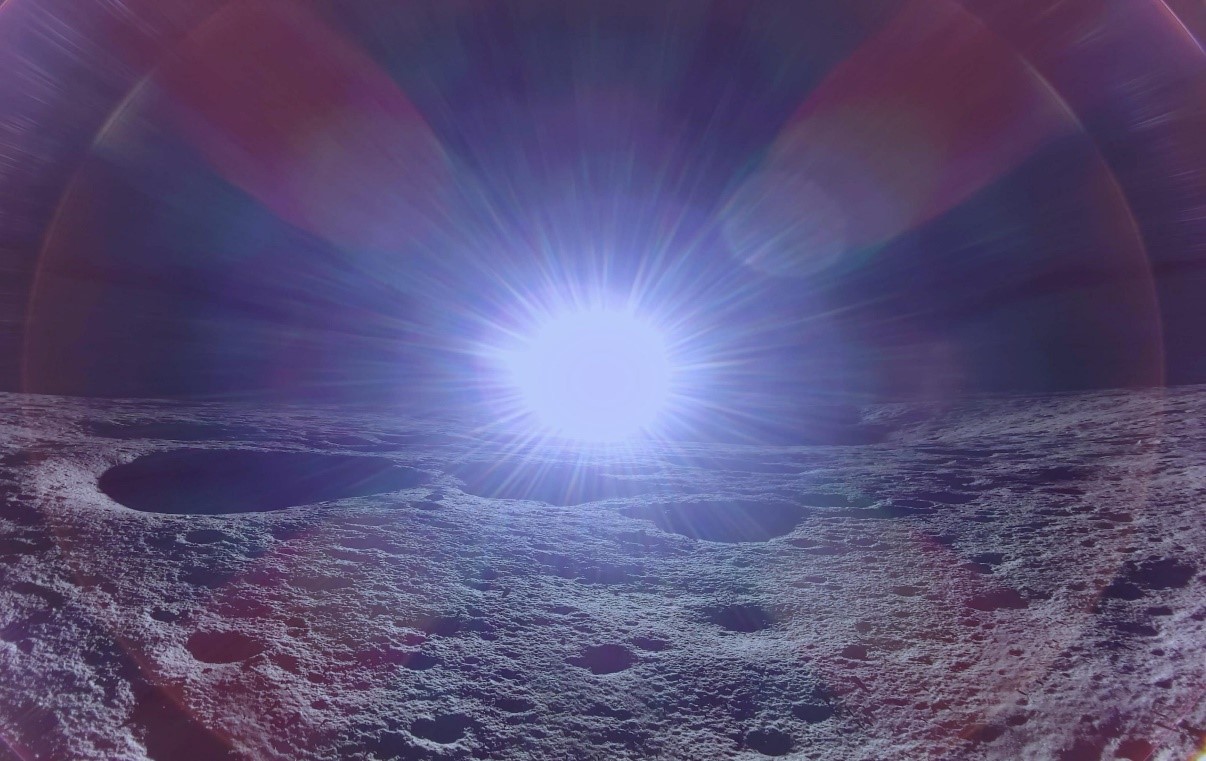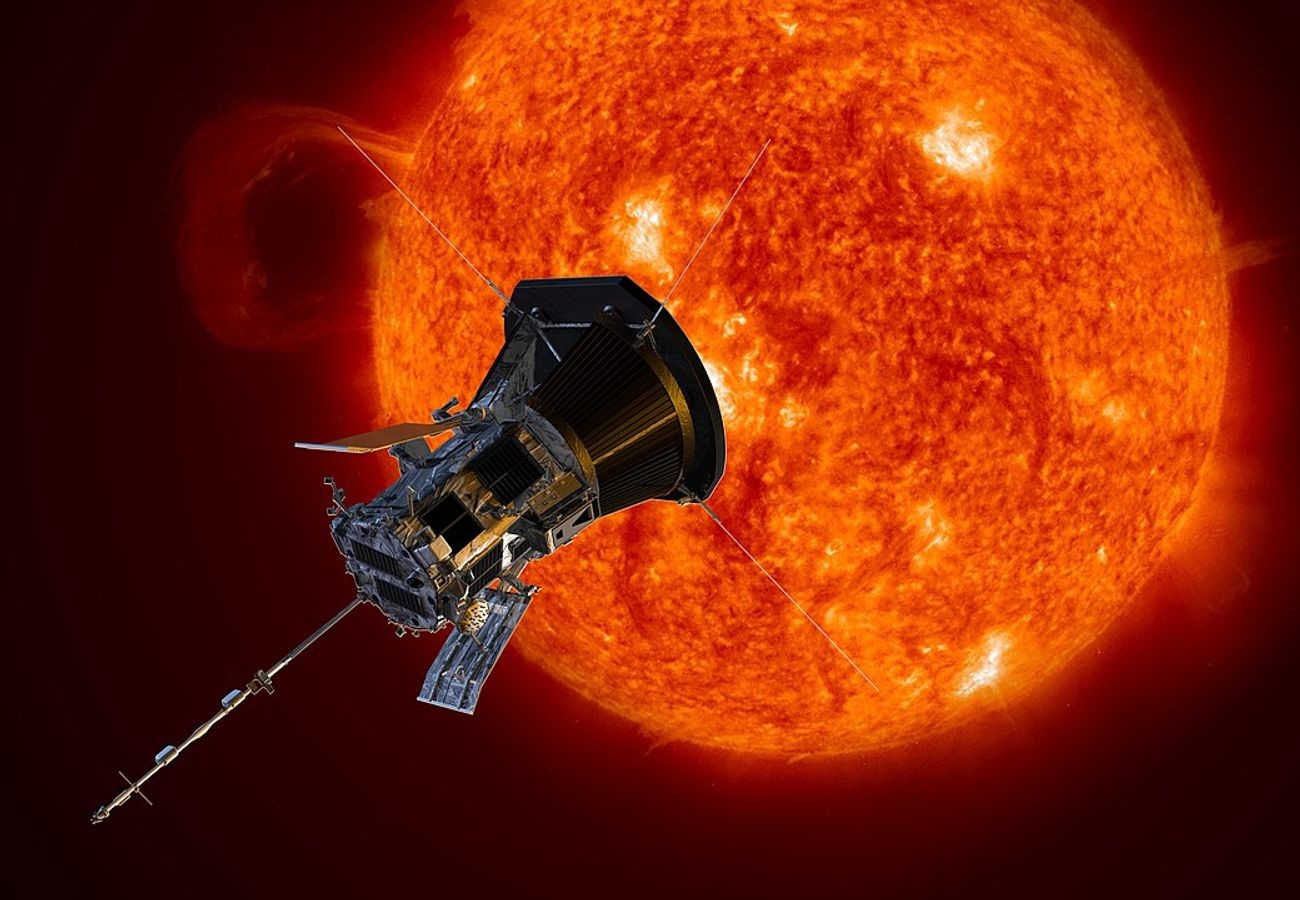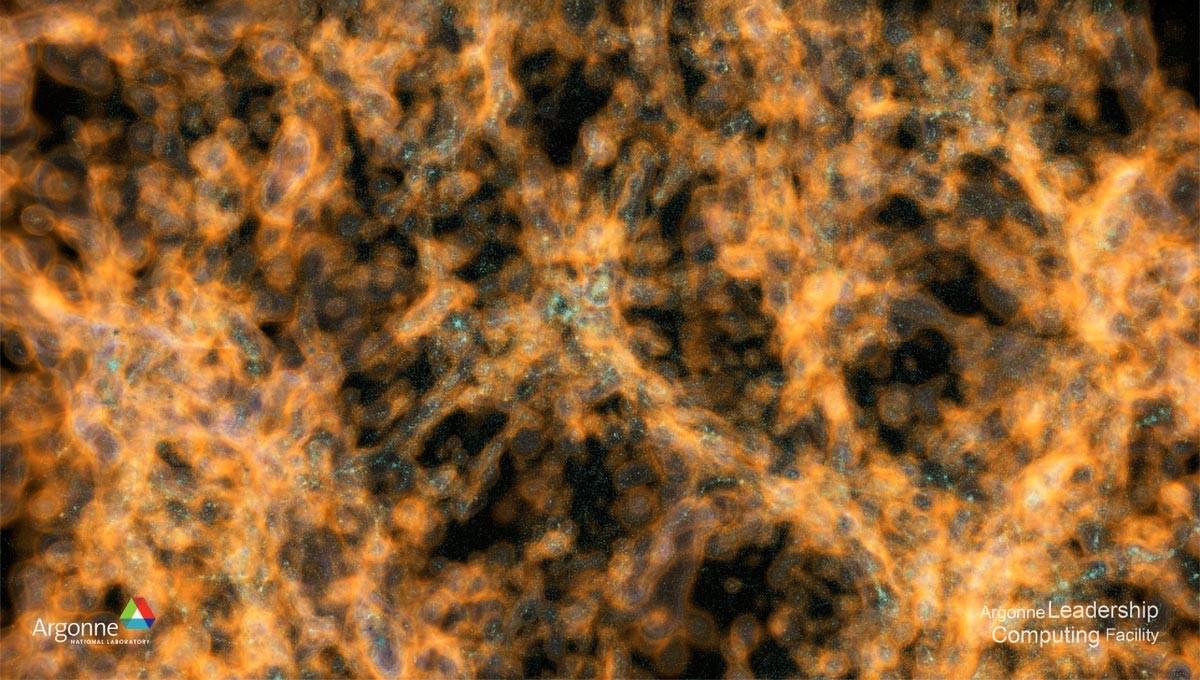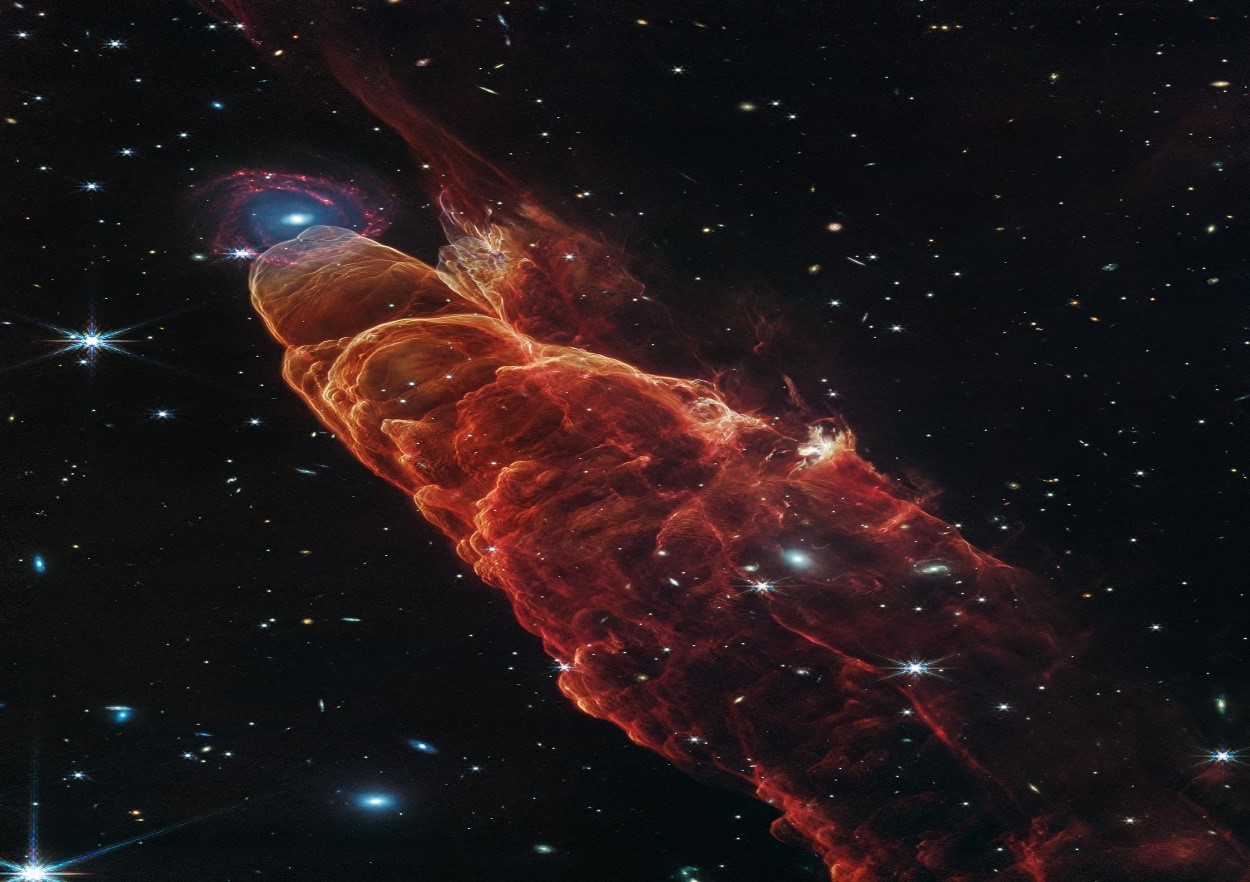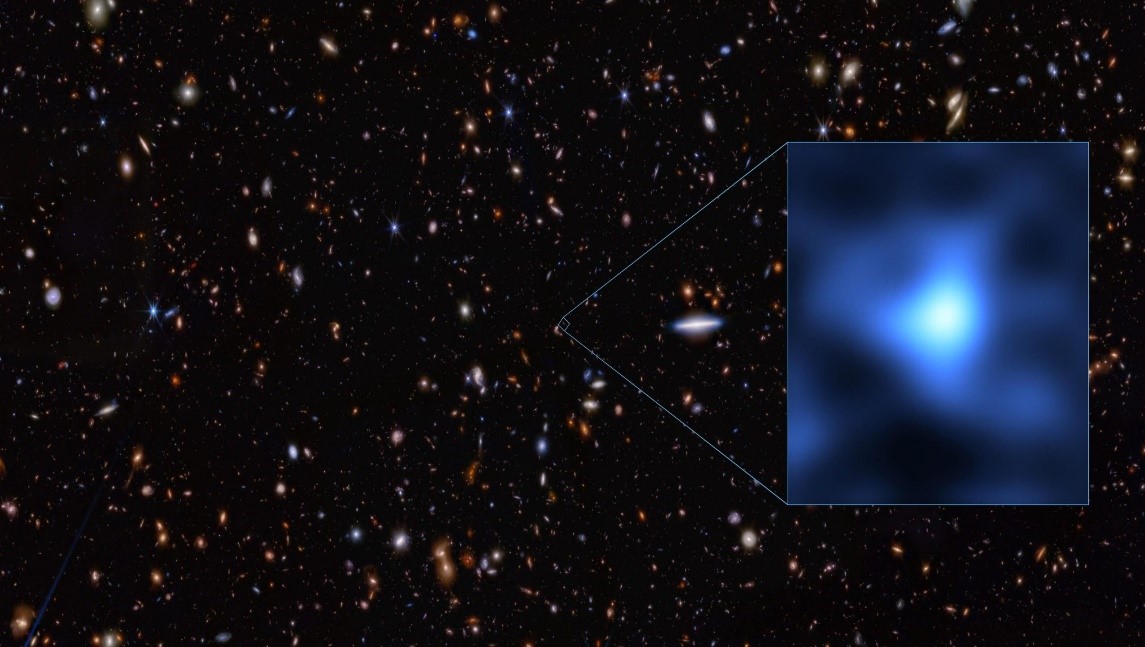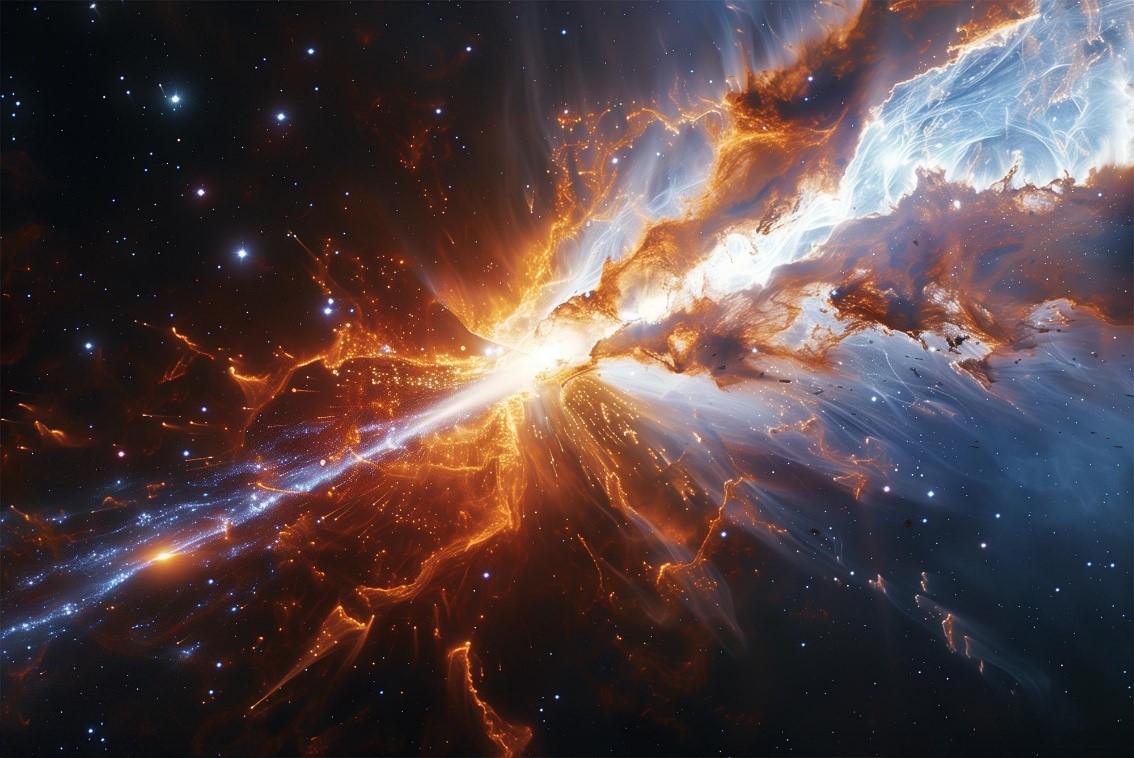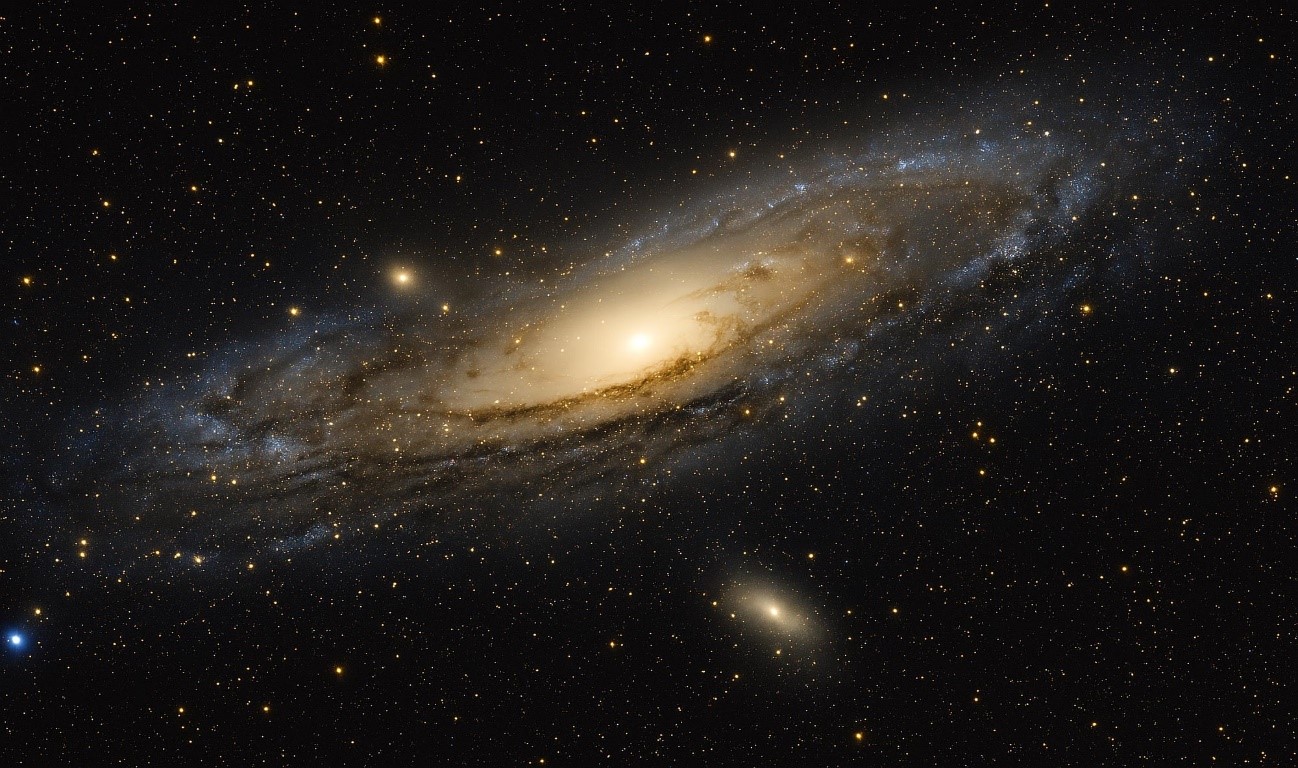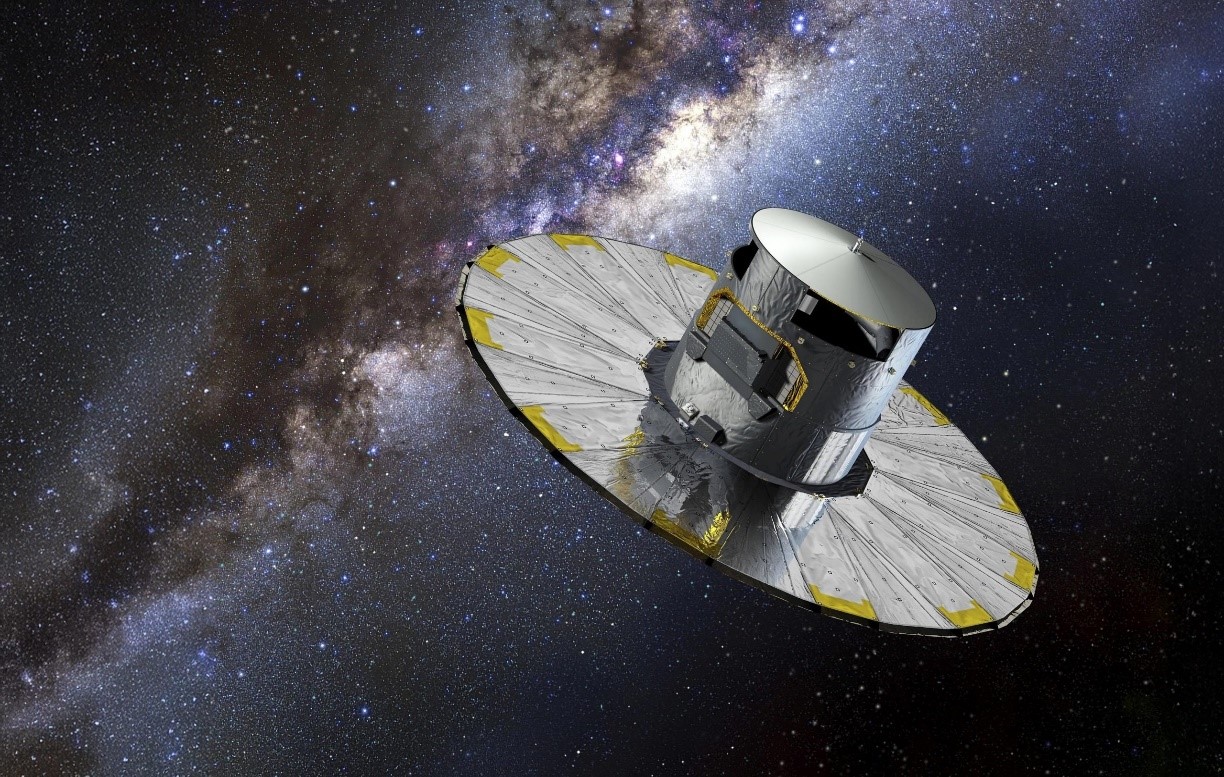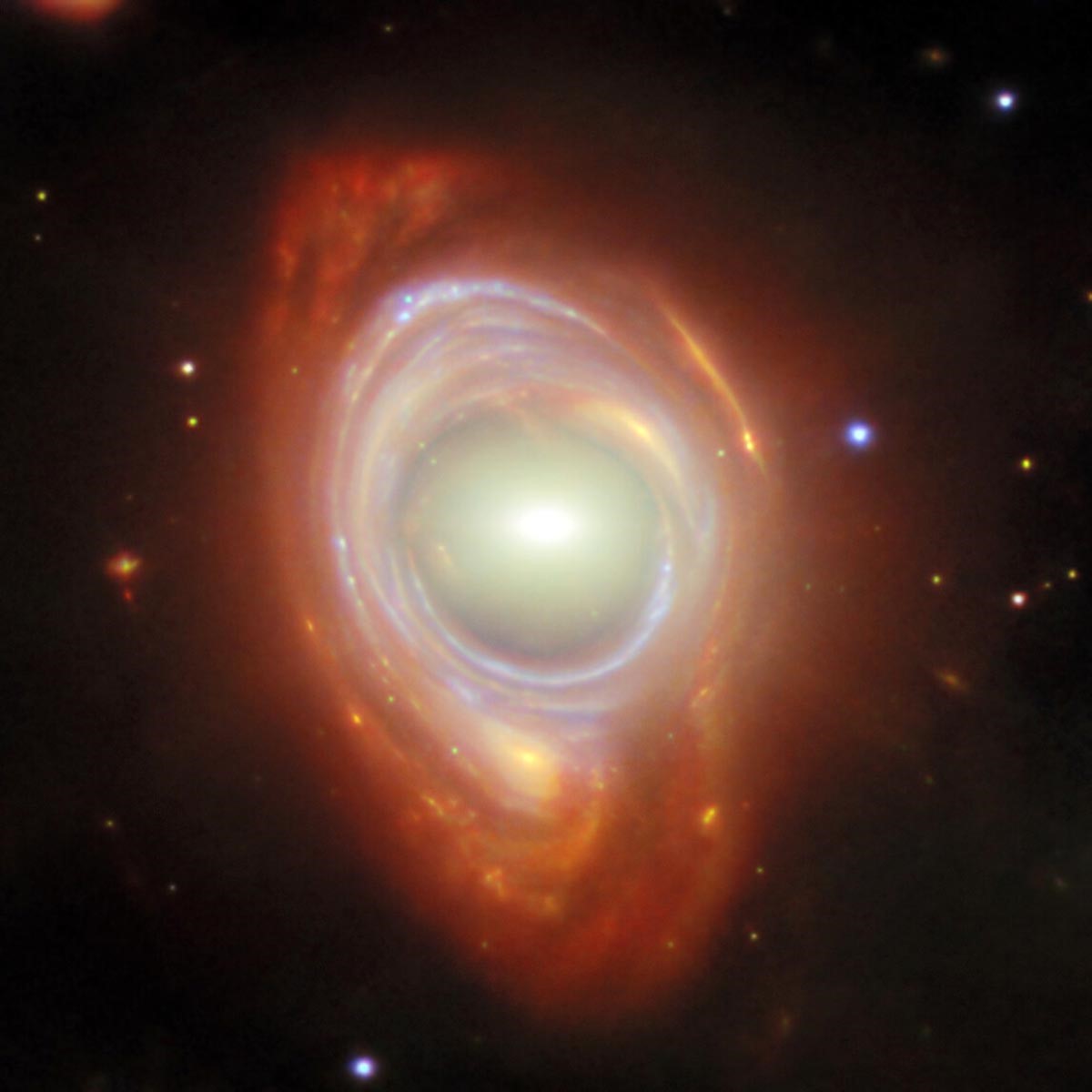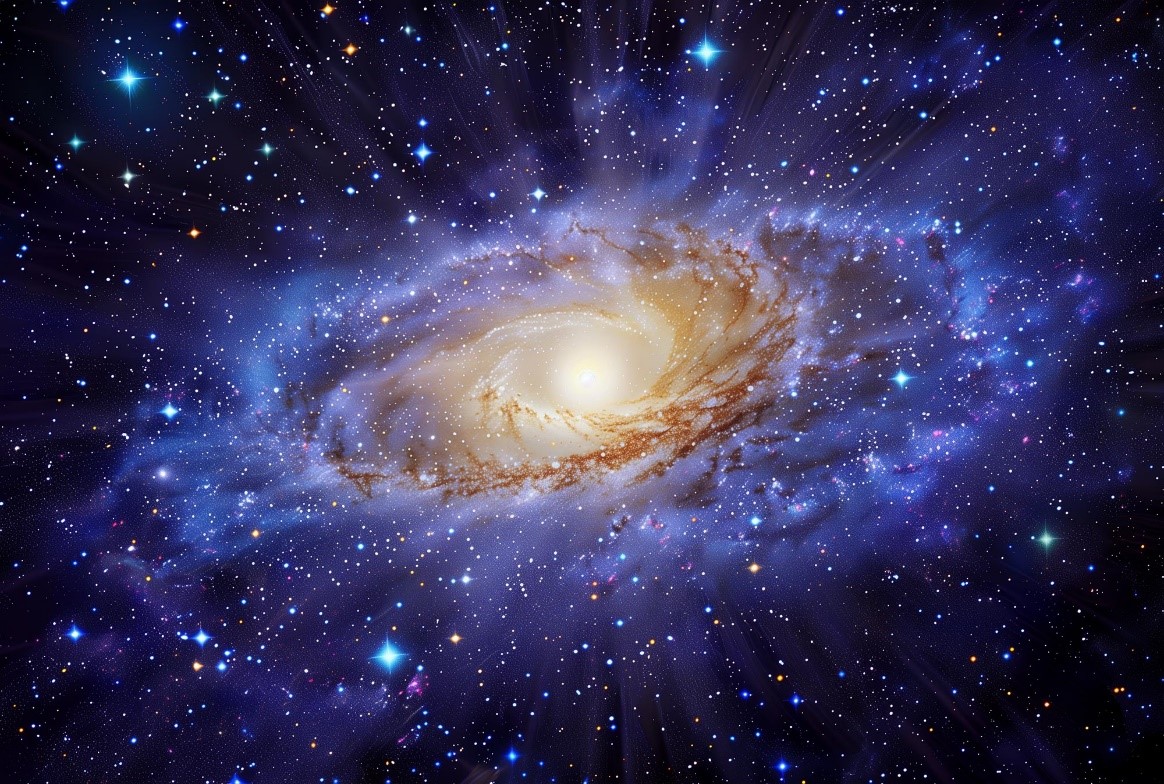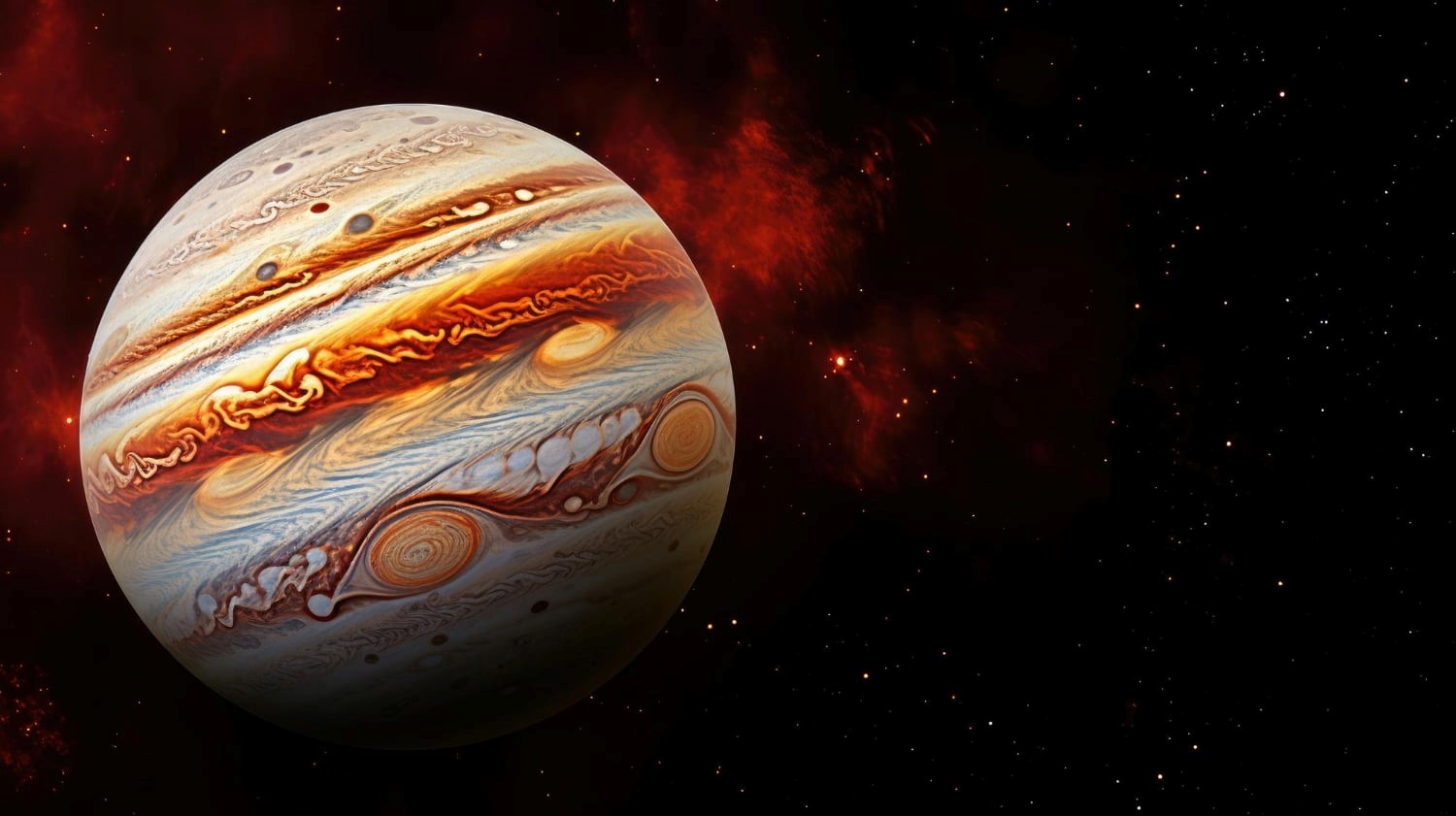Webb Telescope Captures Mysterious Light from the Universe's Earliest Era
Astronomers Stunned by Unusually Bright Hydrogen Emission
In the early universe, a dense fog of neutral hydrogen gas filled space, trapping much of the ultraviolet light emitted by the first stars and galaxies. Only hundreds of millions of years later did this fog clear, as hydrogen atoms became ionized, allowing light to journey across the cosmos.
Astronomers refer to this crucial phase as the era of reionization, but its timeline remains uncertain. A newly discovered galaxy, JADES-GS-z13-1, which existed just 330 million years after the Big Bang, is providing an unexpected clue. It emits bright hydrogen radiation, known as Lyman-alpha emission, which should have been obscured by the dense hydrogen fog of that era. The fact that this light is visible is challenging current theories, prompting scientists to reconsider how rapidly the universe became transparent.
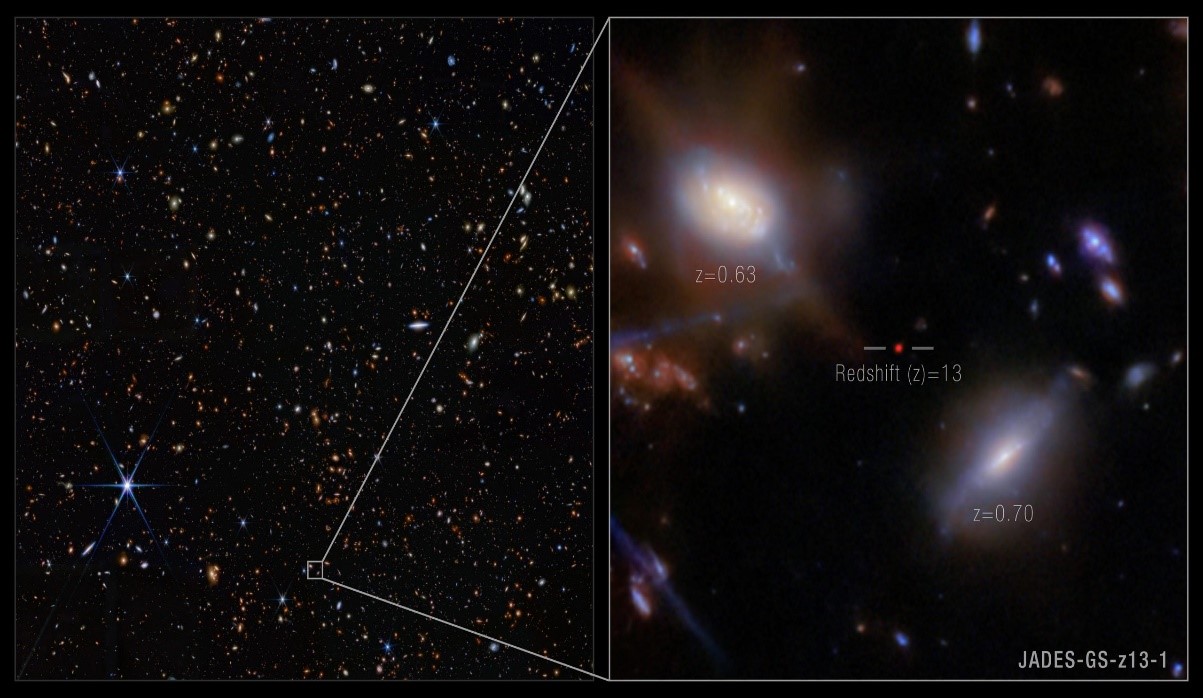
Figure 1. Distant Galaxy JADES-GS-z13-1 Emits Unexpected Hydrogen Signal
Webb Telescope Reveals Galaxy Unexpectedly Clearing Early Cosmic Fog
Using NASA’s James Webb Space Telescope, astronomers have detected unexpectedly bright hydrogen emission from an ancient galaxy. This discovery challenges existing theories about how light escaped the dense fog of neutral hydrogen in the early universe, prompting new questions about cosmic evolution. Figure 1 shows Distant Galaxy JADES-GS-z13-1 Emits Unexpected Hydrogen Signal.
Discovery of the Distant Galaxy JADES-GS-z13-1
The galaxy JADES-GS-z13-1 was identified in images from Webb’s Near-Infrared Camera (NIRCam) as part of the James Webb Space Telescope Advanced Deep Extragalactic Survey (JADES). It is estimated to have existed just 330 million years after the Big Bang. Researchers initially gauged its distance by analyzing how its light was stretched by cosmic expansion, with NIRCam data suggesting a redshift of 12.9. To confirm this, a team led by Joris Witstok from the University of Cambridge, in collaboration with the Cosmic Dawn Center and the University of Copenhagen, used Webb’s Near-Infrared Spectrograph (NIRSpec) for a more detailed study.
Astronomers Astonished by Unexplained Hydrogen Emission
The confirmed redshift of 13.0 places the galaxy JADES-GS-z13-1 just 330 million years after the Big Bang, a fraction of the universe’s 13.8-billion-year history. However, an unexpected discovery stood out—an unusually bright Lyman-alpha emission from hydrogen atoms. This emission, far stronger than anticipated, challenges existing theories about the early universe.
“The early universe was shrouded in neutral hydrogen fog,” explained Roberto Maiolino from the University of Cambridge and University College London. “Reionization, the process that cleared this haze, wasn’t complete until about a billion years after the Big Bang. Yet, GS-z13-1, seen at just 330 million years old, exhibits a distinct Lyman-alpha signal—something that should only appear after the fog has lifted. This finding contradicts current models of early galaxy evolution and has taken astronomers by surprise.”
Defying Expectations: Light Breaks Through
Before and during the era of reionization, dense clouds of neutral hydrogen enveloped galaxies, blocking their ultraviolet light, similar to how colored glass filters light. Only after sufficient stars formed and ionized the hydrogen could this light—especially Lyman-alpha emission—escape and travel to Earth. The detection of Lyman-alpha radiation from this early galaxy challenges current models and offers crucial insights into the universe’s early evolution.
Reevaluating the Evolution of the Cosmos
Astronomers were surprised to discover this galaxy, as it challenges current models of cosmic evolution. Kevin Hainline from the University of Arizona compared the early universe to a dense fog, which should have blocked most light from emerging galaxies. Yet, this galaxy's bright emission manages to shine through, suggesting a reevaluation of how and when the universe underwent reionization.
Potential Sources of the Light Emission
The origin of the Lyman-alpha radiation from this galaxy remains uncertain, but it may stem from the earliest generation of stars in the universe [1]. “The large bubble of ionized hydrogen surrounding this galaxy could have been produced by an unusual population of massive, hot, and extremely luminous stars—possibly among the first to form,” explained Witstok. Another possibility is that the emission is driven by a powerful active galactic nucleus, powered by one of the first supermassive black holes. This research was published in Nature on March 26.
Reference:
- https://scitechdaily.com/webb-telescope-detects-impossible-light-from-the-dawn-of-time/
Cite this article:
Janani R (2025), Webb Telescope Captures Mysterious Light from the Universe's Earliest Era, AnaTechMaz, pp.293


